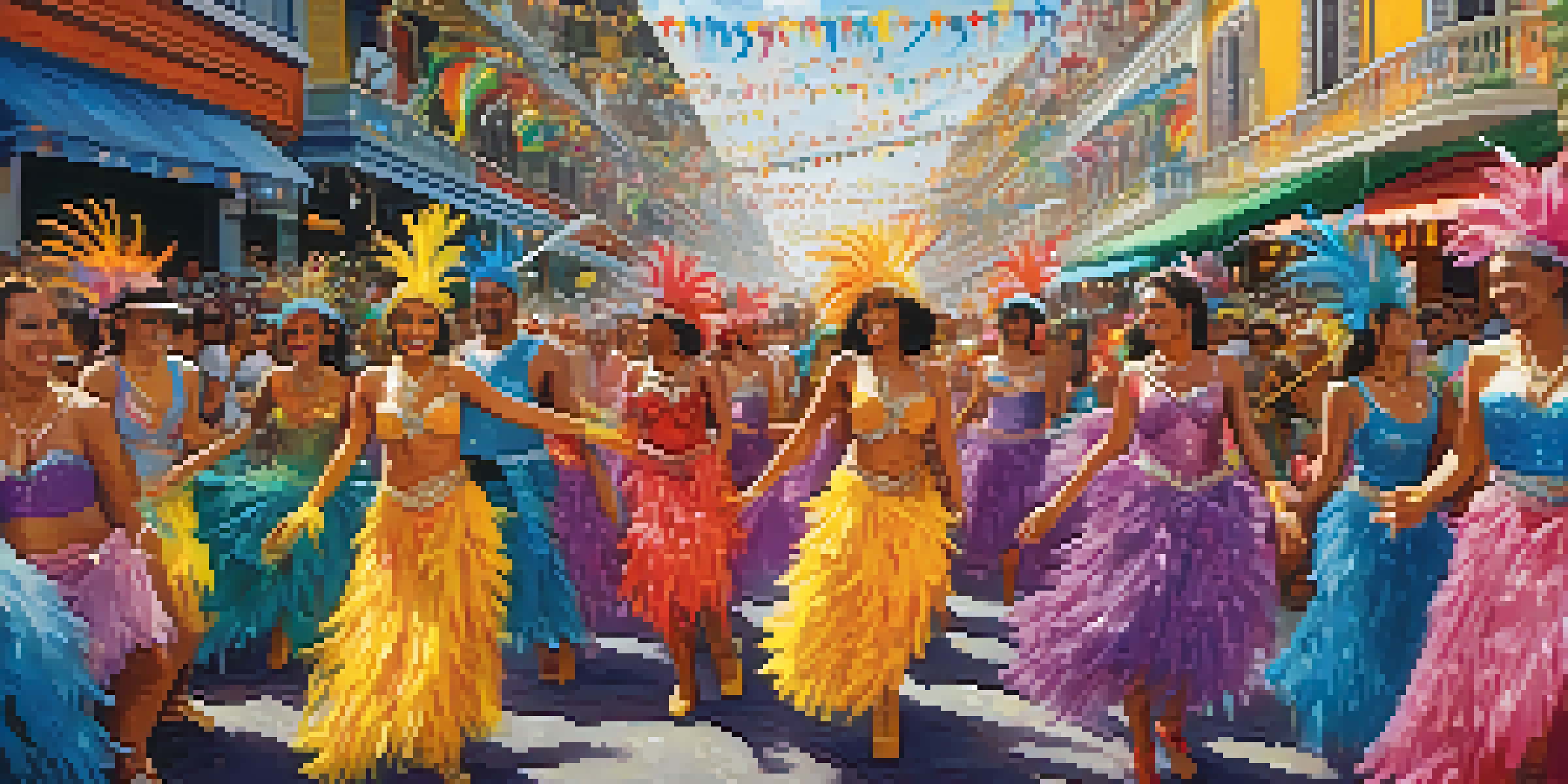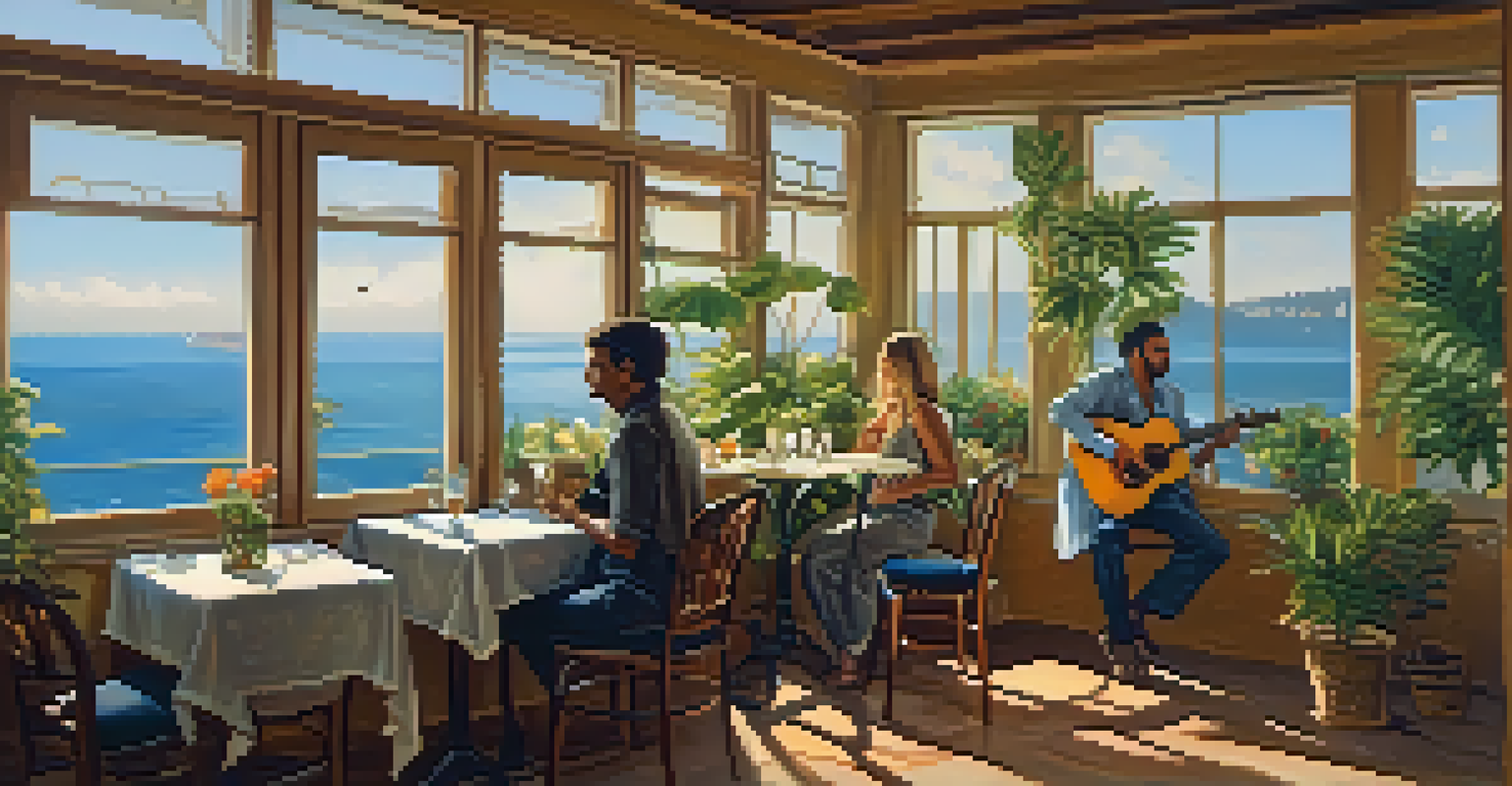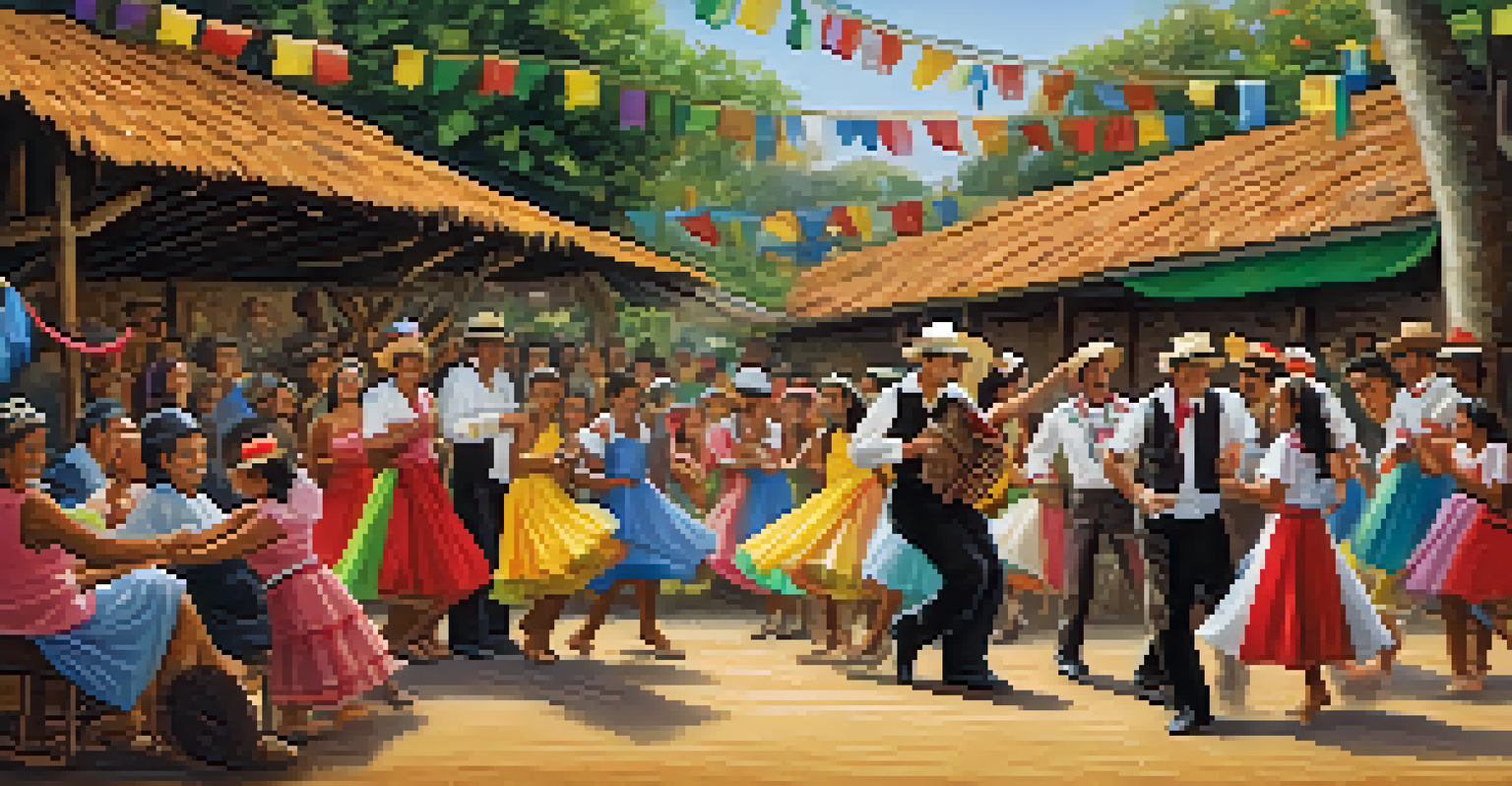Cultural Experiences: Dance and Music in Brazilian Tours

The Heartbeat of Brazil: Understanding Its Cultural Rhythms
Brazil's rich cultural tapestry is woven with the threads of diverse musical styles and dance forms. From samba to bossa nova, each genre reflects the country's unique heritage and the influences of African, Indigenous, and European cultures. These artistic expressions serve as a window into Brazil's soul, allowing visitors to experience the vibrant emotions of its people.
Music is the shorthand of emotion.
In Brazilian tours, you'll find that music isn't just entertainment; it's an essential part of community life. Street performances, local festivals, and dance gatherings immerse travelers in the rhythm of daily Brazilian life. Whether it's the infectious beats of a samba school or the soulful melodies of a street musician, each encounter invites you to join in the celebration.
As you explore these cultural experiences, you'll discover that music and dance have the power to connect people across boundaries. They encourage interaction, understanding, and joy, making every moment spent in Brazil unforgettable. These shared experiences foster a sense of belonging, binding together locals and visitors alike through the universal language of art.
Samba: A Dance of Joy and Community
Samba is more than just a dance; it's a vibrant expression of Brazilian culture that embodies joy and community spirit. Originating from Afro-Brazilian communities, samba has evolved into various styles, each with its own flair and rhythm. From the lively samba de roda to the electrifying samba enredo performed during Carnival, this dance invites everyone to participate and celebrate life.

When you join a samba class or watch a performance, you're not merely observing; you become part of a larger story. The dance's intricate footwork and infectious energy encourage you to let loose and embrace the moment. It's an experience that transcends language and cultural differences, inviting you to express yourself through movement.
Brazil's Music Unites Cultures
Music and dance in Brazil create shared experiences that foster community and connection among locals and visitors.
Additionally, samba schools play a crucial role in preserving this tradition, often involving entire neighborhoods in their preparations for Carnival. These schools foster a sense of belonging and pride, as locals come together to create elaborate costumes and choreographies. By engaging with samba, visitors gain insight into the communal bonds that make this dance so special.
The Allure of Bossa Nova: A Melodic Journey
Bossa nova, a fusion of samba and jazz, offers a softer, more introspective side of Brazilian music. Emerging in the late 1950s, this genre captures the essence of coastal living in Brazil, evoking images of sun-soaked beaches and romantic evenings. The smooth melodies and gentle rhythms of bossa nova invite listeners to relax and reflect, making it a perfect soundtrack for any journey.
Dance is the hidden language of the soul.
As you explore Brazil, seeking out bossa nova performances can lead to delightful encounters. Many cafes and bars feature live music, where skilled musicians serenade guests with classic tunes like 'Garota de Ipanema'. These intimate settings provide a unique opportunity to soak in the ambiance while enjoying a taste of Brazilian nightlife.
Engaging with bossa nova also allows travelers to connect with Brazil's artistic heritage. The genre's most famous artists, such as João Gilberto and Tom Jobim, have left a lasting impact on music worldwide. By learning about their contributions and listening to their works, you’ll gain a deeper appreciation for the cultural significance of bossa nova in Brazil's music landscape.
Forró: A Dance of Tradition and Passion
Forró is a lively dance that originates from Brazil's northeastern region, characterized by its accordion melodies and rhythmic beats. With its roots deeply embedded in the rural traditions of the country, forró brings people together for social gatherings and celebrations. The dance is not only a way to express joy but also a means of storytelling, often reflecting the everyday lives and experiences of its people.
Participating in a forró class or attending a local festival provides an immersive experience that showcases Brazil's rich cultural heritage. As you learn the basic steps and twirl around the dance floor, you'll feel the warmth and hospitality of the Brazilian people. This communal aspect of forró fosters connections among dancers, creating an atmosphere of camaraderie and celebration.
Samba Celebrates Joy and Community
Samba is a vibrant dance that embodies the spirit of Brazilian culture, inviting everyone to join in the celebration of life.
Forró also highlights the importance of regional diversity in Brazilian music and dance. Each area has its own unique variations and styles, making it a delightful exploration of the country's cultural landscape. By engaging with forró, travelers can appreciate the depth and richness of Brazil's traditions while creating lasting memories.
Cultural Festivals: A Celebration of Music and Dance
Brazil is renowned for its vibrant cultural festivals, where music and dance take center stage. Events like Carnival, Festa Junina, and Parintins Folklore Festival showcase the country's diverse traditions, each offering a unique experience for visitors. These festivals not only celebrate Brazil's artistic heritage but also foster a sense of community and belonging among participants.
During Carnival, for instance, samba schools compete in dazzling parades, filling the streets with color, rhythm, and excitement. As a visitor, you can immerse yourself in the festivities, joining locals in the revelry. The energy is contagious, as everyone dances, sings, and celebrates together, creating a sense of unity that transcends cultural boundaries.
Moreover, these festivals often feature workshops and demonstrations, allowing travelers to learn traditional dance styles and music genres firsthand. Engaging in these activities enriches your understanding of Brazil's cultural landscape and creates memorable experiences that go beyond the typical tourist attractions.
The Role of Music in Brazilian Daily Life
In Brazil, music is woven into the fabric of daily life, accompanying people in various activities from morning routines to evening gatherings. Whether it's the sound of a street performer strumming a guitar or the cheerful tunes playing in a local market, music infuses everyday moments with joy and energy. This constant presence of music highlights its importance in Brazilian culture.
Many Brazilians incorporate music into their day-to-day activities, using it to uplift their spirits or connect with friends and family. For example, gatherings often revolve around live music and dance, creating a lively atmosphere filled with laughter and camaraderie. This communal aspect fosters bonds that strengthen relationships and enrich lives.
Cultural Festivals Showcase Diversity
Brazil's cultural festivals, like Carnival and Festa Junina, highlight the country's rich traditions through music and dance, promoting unity and joy.
By experiencing this integration of music and daily life, travelers can gain a deeper appreciation for Brazilian culture. Participating in local gatherings or simply enjoying the sounds of the streets offers insight into the values and traditions that shape the lives of its people. It's a reminder that music is not just an art form; it's a vital part of what it means to be Brazilian.
Learning from Brazil: The Power of Cultural Exchange
Traveling to Brazil for its dance and music experiences presents an opportunity for cultural exchange that benefits both visitors and locals. As travelers engage with the rich traditions of samba, bossa nova, and forró, they not only learn about Brazil but also share their own stories and experiences. This exchange fosters mutual understanding and appreciation across cultures.
Participating in workshops and classes offers a unique platform for learning, where local instructors share their knowledge and passion for their art. This hands-on approach allows visitors to immerse themselves in Brazilian culture, bridging gaps and building connections. It’s a beautiful reminder that art can transcend borders and unite us all.

Ultimately, these cultural experiences enrich travelers’ lives, creating lasting memories and friendships. By embracing the rhythms and dances of Brazil, visitors leave with not just a deeper understanding of the country but also a sense of belonging to a global community that celebrates diversity through art.